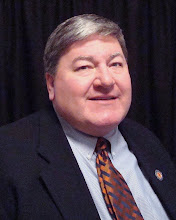
Through a generous donation a pet-assisted therapy program will be started at Auburn University School of Nursing. At this time, we have about 15 students who are interested in learning more about how pets can help people. The first training that was attended happened in Atlanta on August 28-29, 2010. Two things happened at the training. First, I met some great people who love animals and have a desire to use that love for animals to help those who need help because of illness or disability. Second, I was introduced to some of the greatest dogs you could ever be around. These dogs had awesome dispositions and unbelievable obedience. It is so funny to watch someone come into the room and then their face lights up when greeted by one of the therapy dogs. I watched dogs that could dance and do other things but the greatest thing was what they did for every person who was at the program and that was “make them feel better.”
I have been asked, “What does pet-assisted therapy have to do with nursing? Doesn’t that belong in the Vet School?” My answer is a quick—NO! I have great long-standing relationships with veterinarians since I was very young. I grew up on a cattle farm where we had horses and many dogs—both cattle dogs and hunting dogs. I have a great respect for vets but this therapy is on people, not animals and no one is better equipped to work with people than nurses. Nurses are capable of working with people on every level and in every environment. Nurses are not put-off by the bells and whistles of the hospital or the smells that bothers others. We are not disturbed by wounds or tubes or monitors. Nurses work with people and families that are at some of the worst moments in their lives. Nurses understand how attitude, hope, and good and bad emotions affect physical health.
Some facts
· Animal assisted therapy lowers blood pressure
· Researchers discovered that a 12-minute visit with man’s best friend helped heart and lung function by lowering pressures, dismissing release of harmful hormones and decreasing anxiety among hospitalized heart failure patients. Benefits exceeded that resulted from a visit with a human volunteer or from being left along.
· Animal Assisted Therapy has been shown to reduce anxiety and depression. Anxiety was reduced 24% for participants who received a visit from an animal assisted therapy team.
· Presence of a therapy dog lowers behavior distress in children during a physical exam.
· Abstinence from drugs - The presence of the dog resulted in altered barriers to communication between the nurse and clients, which in turn resulted in enhanced transactions. The transactions allowed the participants to assimilate information and improve their feelings of self-esteem. The improved self-image allowed the volunteers a greater understanding of their recovery process.
· Reading with children - children who are learning to read get stressed, not because they aren’t capable of reading but because they get nervous and self-conscious, they worry about making mistakes—and all those worries make it hard to focus. They dread reading in front of their friends, so they often “freeze up” and things just get worse. When they read with a dog, right away they start to relax, and then they forget about feeling self-conscious or nervous, and pretty soon things start to flow a little better. Before they know it, they are enjoying the experience of reading instead of dreading it; they’re even looking forward to the next time. It is simple, and it works beautifully!
· Animal assisted therapy during chemotherapy reduces depression of patients and increases arterial oxygen saturation.
Nurses are the perfect profession to be involved in an animal assisted therapy or assistance. They understand treatment plans and medical needs. The nursing profession is the most caring profession in existence and is the most respected within healthcare.
If you would like to know more about animal–assisted therapy or would like to help just contact me (Stuart Pope DNP, RN) at the Auburn School of Nursing.
